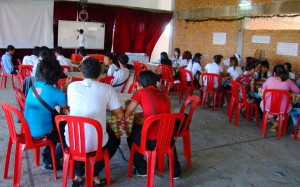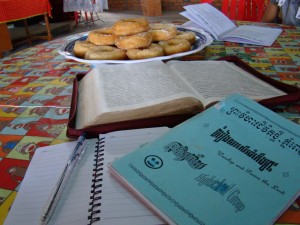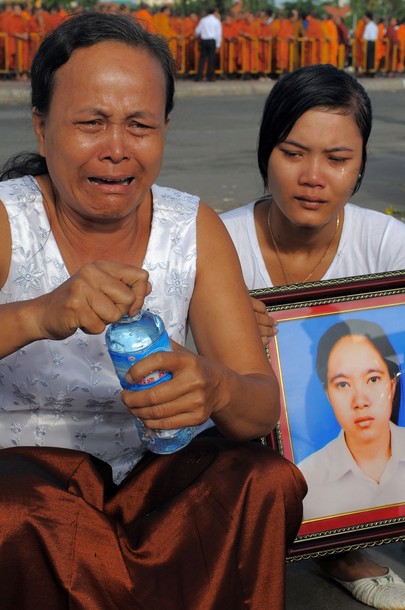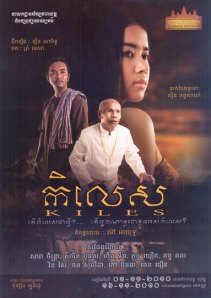I had a memorable weekend as I joined a group of tech whizzes and aeronautical enthusiasts for the launch of a one-of-a-kind Cambodian spacecraft. Maybe we didn’t make it to space, but the launch of “The Sun” was absolutely awesome.
[slideshow]
You may have already heard about the quasi-spacecraft that flew to 30 kilometres above Cambodia last weekend, in what was deemed “Cambodia’s first space mission”, so rather than risk boring you by retelling the news, I’ll let you know what it was like be part of the awe-inspiring aeronautical action.
I woke up early Saturday, packed my bags and headed to meet the organisers of the launch, who invited Lift to come along for the day-long adventure. On the way there, my head was filled with visions of me jumping aboard a spaceship and shooting through the atmosphere with an expert crew before landing on earth and returning home for dinner, but when I arrived at our meeting point, I found some unidentifiable equipment laid out next to a folded tarp and some floatable pool toys. Apparently this wasn’t going to be the type of space mission I had in mind.
But, nonetheless, my excitement over the day ahead began to brew as Eduardo Jezierski, the leader of the project and a chief technical adviser for the NGO InSTEDD, projected images of mines and unexploded ordnances on the wall and told us what to do if we ran across them in our search for the device, essentially made of balloons, tin foil, flip-flops and two cameras to capture sights normally seen only through satellites.
Our crew set out in four vehicles, each with five or six people, at six o’clock in the morning. The adventure began as Jezierski, our fearless leader, announced that we would travel as “convoy” behind the lead car, equipped with antennae tuned to show the way to the launch pad.
I was the youngest person in our convoy, but I had no trouble connecting with the other participants, from varying places and background, united in our desire to be part of an exciting and memorable event. After an hour of driving I looked out the window and saw the familiar scene of rice fields and dikes spread out over the countryside. As we came to a halt I realised this bland scenery was about to be brought to life by the launch of the humble spaceship named Preah Atit (The Sun).
I had launched balloons into space in the past, usually by accident as they slipped out of my hand and floated into the sky. But for this glorified balloon, attached to a lightweight box, we had to first prepare equipment and calculate where the craft was likely to land.
After preparations were complete we began the countdown from 10 and Cambodia’s cosmic creation began the ascent toward its flaming namesake, becoming smaller and smaller until it disappeared from our earthly sight.
Although we temporarily lost contact with The Sun, the onboard camera promised to capture everything we missed (check it out at www.Phnompenhpost.com). After more than an hour we finally reestablished visual contact and watched intently as the device returned to earth, with nearly two hours of priceless footage on board.
We knew that the helium-powered ship along with two cameras, securely fastened before take-off, were now stranded somewhere within about 100 kilometres of our launching pad.
Despite our excitement over the pending search and rescue mission, the crew in our car was running extremely low on energy, having hoped for a celebratory breakfast after a successful launch, and agreed that food was urgent.
On cue, I pulled two baguettes out of my back pack, split them among my famished friends and we set off to find the fallen craft. “Chasing and finding The Sun is like looking for a needle in the ocean,” said one of my compatriots as our driver, guided by a Global Positioning System and printed map of Cambodia, headed towards the approximate point of landing.
For some reason, we soon lost the signal from The Sun and stopped for lunch while Jezierski worked out a new estimate for the landing location as his tech-savvy troops tried to connect to the internet for consultation.
After a short delay, our new coordinates were passed around and we rolled along for nearly three hours. The drivers drove like men on a mission as main roads led to smaller roads, which led to dirt paths until it seemed like we were forging out own path through the countryside. Even so, we soon realised that our vehicles could only take us so far and we stopped the convoy and set out on foot to find the fallen “Sun”.
A frightening snake and flesh-eating ants proved to be minor obstacles as we scoured the earth’s surface for our elusive spaceship. After 10 minutes we heard shouts that were immediately recognisable as signals of success.
After taking a group photo we returned to where our cars were parked and wasted little time in taking a memory card out of one of the cameras and gathering around to watch a clip of “The Sun’s” voyage on a laptop.
Given my high expectations for the trip, I am still a bit disappointed that I spent the day stuck on earth, but it is an experience I’ll never forget, and at least I can use the videos we helped capture to prepare for the next Cambodian space mission, when I will surely be sitting alongside the cameras as I shoot toward the sun.
by: Dara Saoyuth
This article was published on Lift, Issue 39, October 6, 2010
You can also read the article on Phnom Penh Post website










